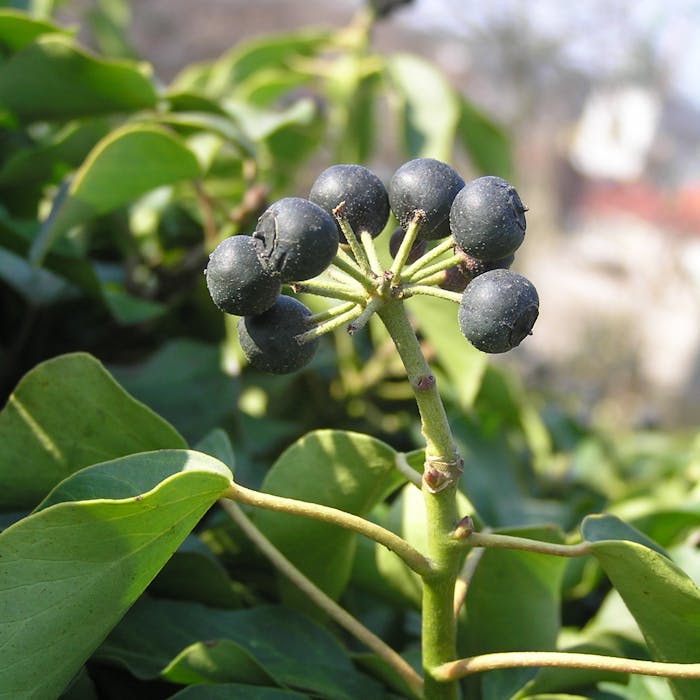
Ivy - much maligned but vital for nature
Ivy is a common evergreen climbing plant, mistakenly thought to strangle trees. It is now better understood as a great benefit to wildlife - supporting at least 50 species of wildlife. There are two subspecies of ivy native to the UK.
Ivy is a woody climber which can grow to a height of 30m. It has two different forms – juvenile and mature. It has climbing stems with specialised hairs which help it stick to surfaces as it climbs. Mature forms can be self-supporting.
The leaves are dark green and glossy with pale veins. Leaves of juvenile forms have 3-5 lobes and a pale underside. On mature forms, leaves are oval or heart shaped without lobes.
There are also many cultivated varieties of ivy, with differing leaves which are variable in size, colour, number and depth of lobes. The leaves are often variegated green with white, cream or yellow.
Only mature plants produce flowers and fruit. The flowers are yellowish green and appear in small, dome-shaped clusters known as umbels. They turn into black, berry-like fruits.
Ivy grows well throughout the UK and can be found in many habitats, including woodland, scrub, wasteland and on isolated trees. It is tolerant of shade and survives in all but the most dry, waterlogged or acidic soils.
It uses trees and walls for support, allowing it to reach upwards to better levels of sunlight. It is not a parasitic plant and has a separate root system in the soil and so absorbs its own nutrients and water as needed.
Ivy flowers in September to November and its fruits ripen in November to January.
Nectar, pollen and berries of ivy are an essential food source for insects and birds during autumn and winter when little else is about. It also provides shelter for insects, birds, bats and other small mammals. The high fat content of the berries is a nutritious food resource for birds and the berries are eaten by a range of species including thrushes, blackcaps, woodpigeons and blackbirds.
Ivy is particularly important to many insects before they go into hibernation. Some of the main insect species which forage on the nectar and pollen of ivy are bees, hoverflies and common wasps. It is also an important food plant for some butterfly and moth larvae such as holly blue, small dusty wave, angle shades and swallow-tailed moth.
Many rare insects are attracted to ivy flowers, including the golden hoverfly.
Further reading
Links to external websites are not maintained by Bite Sized Britain. They are provided to give users access to additional information. Bite Sized Britain is not responsible for the content of these external websites.
